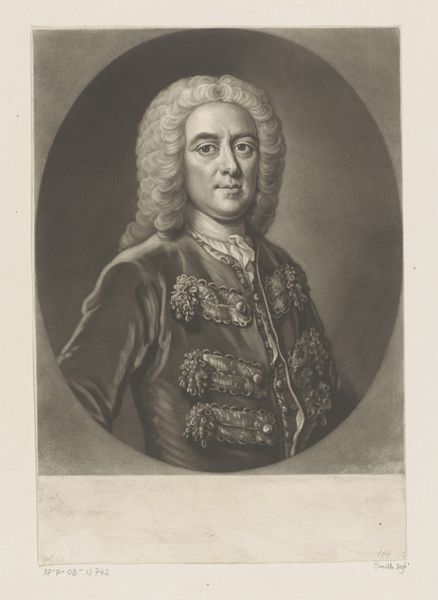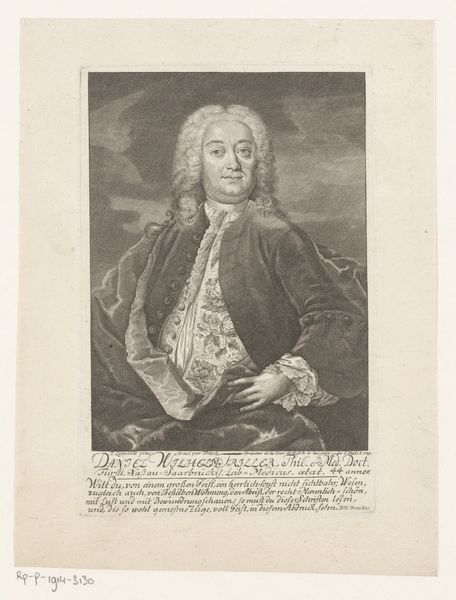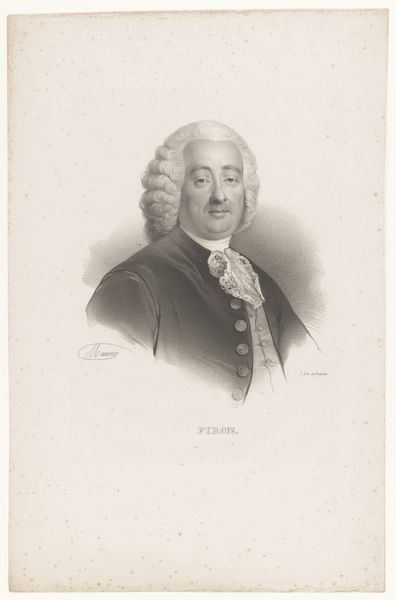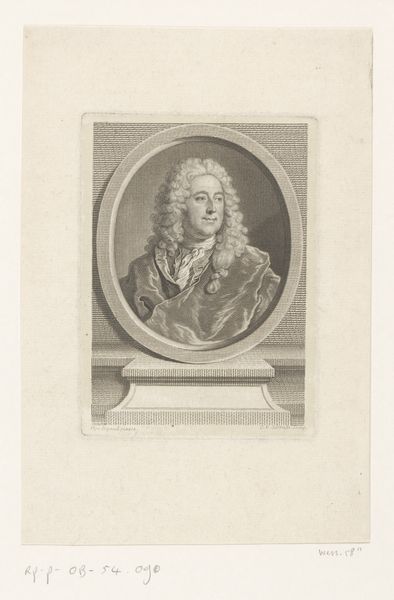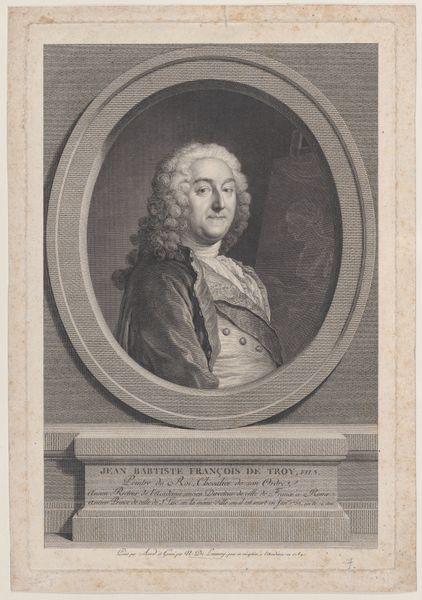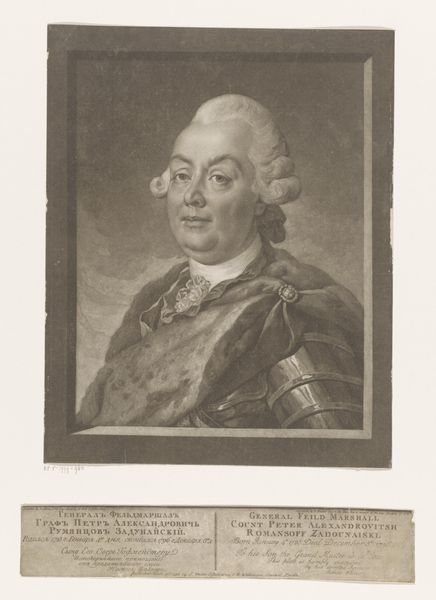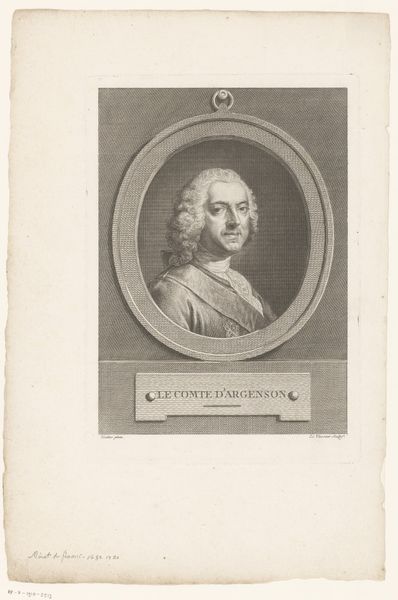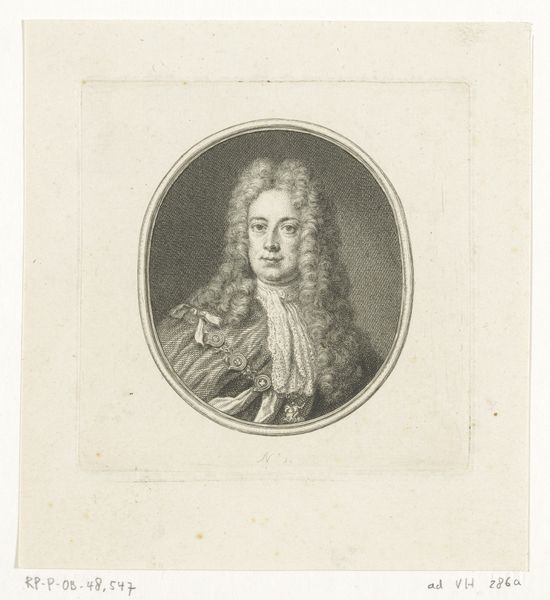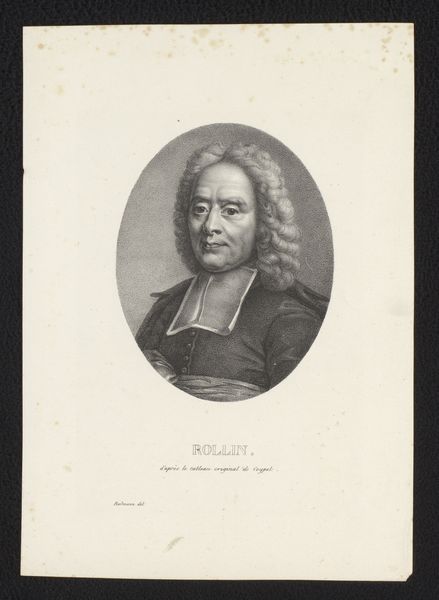
drawing, print, engraving
#
portrait
#
drawing
#
neoclacissism
# print
#
engraving
Dimensions: height 439 mm, width 296 mm
Copyright: Rijks Museum: Open Domain
Curator: Let's discuss this elegant portrait, "Portret van Henri Cochin" by Jean Pierre Sudre, created between 1820 and 1827. It’s currently held here at the Rijksmuseum. Editor: My immediate impression is of austere refinement, typical of neoclassical portraits. The controlled use of line and tonal variation really dictates the gaze. Curator: Absolutely. Sudre meticulously utilizes engraving, a printmaking process that itself speaks to reproducibility and dissemination, aligning perfectly with Neoclassical ideals of rational order. Think about the engraver’s meticulous labor, translating an image through careful tooling and pressure onto the page. Editor: And that oval frame, the strict portrait format. I find the subject's elaborate wig rather captivating, a flamboyant contrast against what seems like a very functional garment, highlighting a tension between performative status and lived experience. Curator: Yes, the visual language of Neoclassicism prized clarity and balance, reflected in the print's crisp lines and tonal range. The carefully delineated features underscore an ideal form, though it's rendered through the rather gritty process of engraving, pulling at the established clean ideals. It suggests the artist, in replicating the portrait through multiple impressions, grapples with the tension between idealized representation and the materiality of art production. Editor: Indeed, by emphasizing the lines created with an engraver, we must consider it challenges the idea of "original genius.” Rather, it becomes about skillful labor and the mechanical reproduction and distribution of images. Did the laborious creation serve as an equalizer of image creation? Curator: It adds layers to our understanding of not only the artwork but its role in broader cultural networks. This portrait doesn’t simply represent an individual, but engages in dialogues about class, skill, and artistic value at that time. Editor: So, it seems we have traveled past a representation of Cochin, and further engaged in how labor changes the definition of portraiture during this period. Thank you. Curator: Thank you; it always adds depth when material considerations amplify the nuances of artistic intention.
Comments
No comments
Be the first to comment and join the conversation on the ultimate creative platform.
